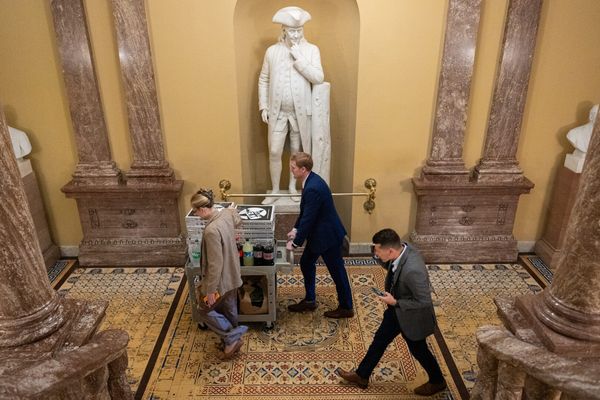The Washington Commanders’ quest to build a new stadium is going roughly as well as their last two decades of on- and off-field headlines would suggest.
The Virginia General Assembly delayed a vote on whether or not to supply $350 million in state-funded subsidies toward the project after three lawmakers withdrew their support, citing a Congressional investigation into team owner Dan Snyder and the franchise’s alleged defrauding of season ticket holders. One of the wrinkles in the building proposal the Commanders are pushing forward is that their new venue would have the smallest capacity in the NFL — and by a significant margin.
Washington’s current plan calls for 55,000 seats. That’s 5,000 to 7,000 fewer than the Buffalo Bills have slated for their new stadium, which would be the coziest confines in the league, and 6,500 fewer than Soldier Field — currently the NFL’s smallest home field. Here’s where it would stack up among the other new venues built or planned since 2015:
- Planned Commanders stadium: 55,000
- Unnamed new Bills stadium: 60,000 to 62,000
- Allegiant Stadium (Raiders): 65,000
- U.S. Bank Stadium (Vikings): 66,655
- SoFi Stadium (Rams/Chargers): 70,000
- Mercedes-Benz Stadium (Falcons): 71,000
That would be a major reform from the desolate sections of FedEx Field, which has room for upwards of 91,000 people but lately has been limited to a little under 68,000 seats for a team with one playoff win since 2000. It would also disqualify the Commanders from hosting a Super Bowl.
The league has typically rewarded franchises who’ve opened new stadiums with a title game, leading confetti to be dropped in Indianapolis, Los Angeles, Atlanta, Minneapolis, and even East Rutherford, New Jersey in recent years. One of the NFL’s stipulations for hosting a Super Bowl is at least 70,000 available seats — though recent exceptions have been made for stadiums that offer 64,000 or more.
Washington’s planned home would hold significantly less than that, potentially disqualifying it from a token Super Bowl and stunting the economic impact the team is trying to sell to local governments. While fewer seats would mean better seat quality, smaller parking lots, and a slight reduction in gameday traffic — a massive concern in the D.C. area — it also means less potential taxable revenue. That’s a major selling point in any public funding grift, and now it’s a little less convincing.
That doesn’t mean the deal won’t go through or that Washington will stick to its plan of an intimate afternoon with 54,999 of your closest friends, pressed close to the action of a 24-13 loss to the Philadelphia Eagles. It just means priorities have shifted for the Commanders. Where that leaves their stadium — from an architectural standpoint and in the eyes of local government — remains uncertain.







